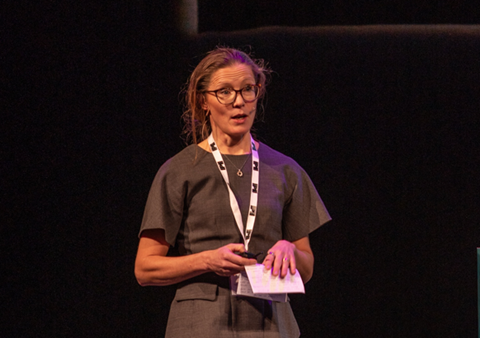The CIO of Finnish pension insurer Veritas has praised her country’s unique earnings-related pension system – despite its short-term pro-cyclical tilt.
Niina Bergring, CIO and deputy chief executive of the €3.2bn provider, told IPE’s conference in Dublin last week that Finland’s system experienced “suboptimal” periods but, over the long term, it was “optimally crafted”.
Bergring was responding to a question from IPE editorial director Liam Kennedy in a panel discussion about regulatory action taken during the last financial crisis to relax pressure on Finland’s pension insurers – the largest of which are Ilmarinen and Varma.
“The Finnish regulator did change the solvency rules in the deepest dip of the crisis, because all of the companies were near regulatory limits,” she said.
Finland’s competing insurers are effectively forced to stay close to each other in terms of their asset allocation, she explained, because of the way solvency requirements are calculated.

“We are actually co-insured, and that is why the integrity is so high because the beneficiary faces no risks whatsoever. The system is carrying the risk,” she said. “These pension assets are also guaranteeing the Finnish AAA [credit] rating, so it is of national importance that we are shipshape.”
The pension insurers compete against each other for their employer clients, who can theoretically change provider every quarter, she added.
This competitive situation, according to Bergring, led to insurers having to make sure that their quarterly returns were as attractive as possible.
Because of extremely low solvency levels in the first quarter of 2009, the Finnish pension insurers were only able to tolerate equity weightings of between 11% and 19%, while other pension providers and funds in neighbouring Sweden had been free to hold more than 30% of their assets in shares at that point.
This forced short-termism showed up as a slight inefficiency over a 10-year timescale, Bergring said, but added that nevertheless, as a whole the system had succeeded.
“There are lots of beautiful things in the system which we don’t have time to go into, but it does require this solvency system that unfortunately is pro-cyclical,” she said.
“The actuaries have done a good job optimising the parameters of the solvency system, I believe, and in the really long term, I believe we can provide the returns the system needs.”
IPE Conference: PensionDanmark is Europe’s best pension fund
- 1
- 2
- 3
- 4
 Currently reading
Currently readingIPE Conference: Veritas CIO on ‘beautiful’ Finnish pension system
- 5
- 6
- 7
- 8
- 9
- 10
- 11
- 12























No comments yet